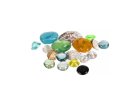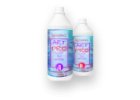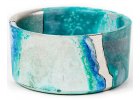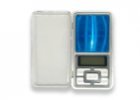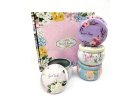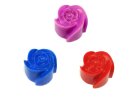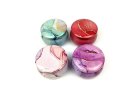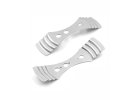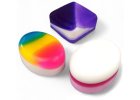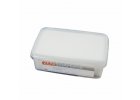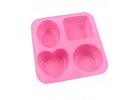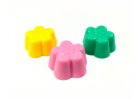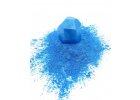How to work with epoxy resin – for beginners
Epoxy resin, also known as crystal resin, resin, epoxy, or simply epoxide, offers many interesting possibilities. Combined with suitable decorations and colors, you can create original and very interesting products. Working with resin requires adherence to specific procedures and principles to achieve the desired result.
What are the two components of epoxy resin?
The epoxy resins used for making products have two components: component A and component B.
• Component A is always the resin.
• Component B is always the hardener.
Both of these components are mixed in a precise ratio, which is unique to each resin and specified in its description on the e-shop and on the bottles themselves. By adhering to the correct ratios, we ensure that the resin cures properly and we achieve a clear and hard product without defects.

How to weigh the resin?
Since there are various types of casting resin, each developed for different casting purposes and products, each type of resin has a different mixing ratio for the aforementioned components A and B. You may encounter different mixing ratios, such as 3:1, 100:30, or 100:60, etc. Keep in mind that the ratio is always weight-based, so both components must be weighed with precision on a digital scale.
If we need to mix resin in a ratio of, for example, 100:30, we must mix 100 grams of component A with 30 grams of component B.
To avoid inaccuracies in weighing that could adversely affect the final product, we mix a minimum of 50 grams of material at once. For example, if we mix only 10 grams of resin and 3 grams of hardener, we might weigh a few tenths of a gram less, which constitutes a high percentage of inaccuracy in such a small amount of material. While such minor inaccuracies are critical in small quantities, they are negligible in amounts around 50 grams, which does not affect the curing accuracy.
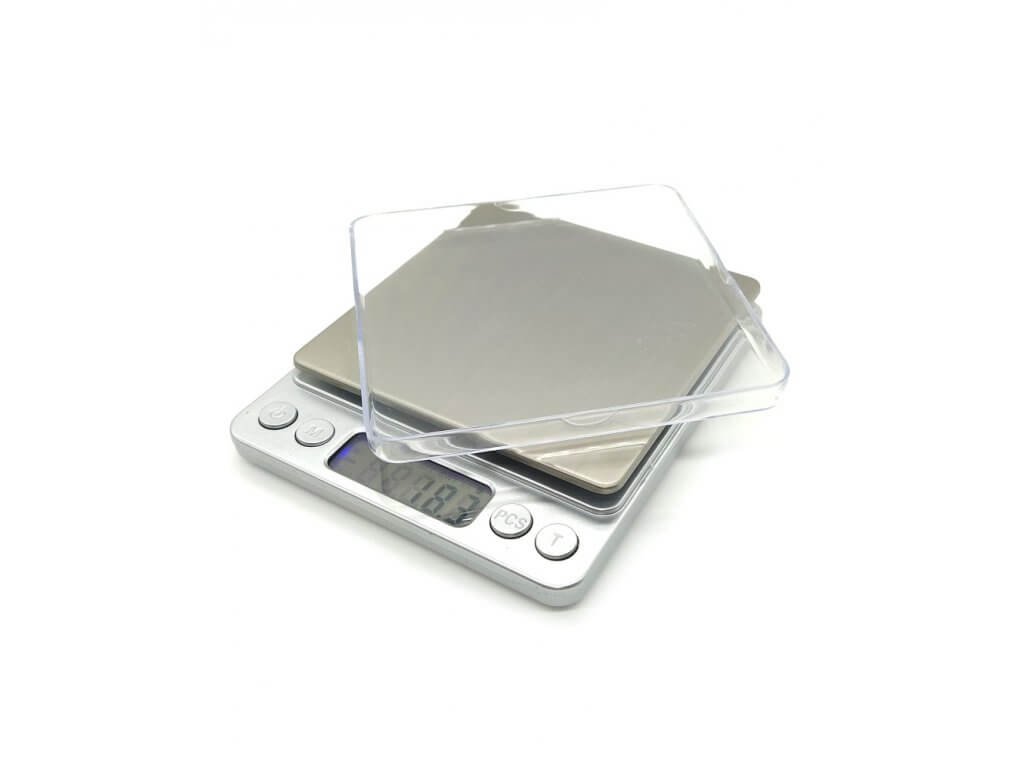
How to mix the resin?
We will need:
• A quality digital scale for weighing the prescribed weight ratio.
• Cups for mixing both components.
• Spatulas (wooden, silicone, or plastic).
You can find all the necessary tools in one convenient category here.

Mixing procedure:
1) First, weigh component A into a cup with precision to the gram, reset the scale, and then weigh component B into the same cup.
2) Thoroughly and adequately mix both components. Always mix from the sides and the bottom to ensure that all components are well combined. Mix slowly and with gentle strokes to avoid incorporating too many bubbles, for about 3 minutes.
3) Pour the mixed material into a new cup and repeat the mixing. This step is crucial and should not be skipped. There will always be a bit of unmixed material at the bottom or edges of the cup that will not cure properly in the cast product. Only through repeated mixing can you ensure that the resin is perfectly mixed and ready for casting.
Once the resin is mixed, you can add colors, glitter, and other decorations.
How to color the resin?
If you decide to color the resin, you can add color or pigments for epoxy to the prepared mixture. Adding color to casting resin will result in transparent resin in the chosen color; adding pigment to epoxy will result in opaque colored resin. We have a clear division of these colors on our e-shop into colors for transparent casts and colors for opaque casts.
Another option for coloring epoxy resin is using various metallic powders – metallic pigment. This is a fine powder in various colors that creates a metallic effect in the final product. Metallic pigment will color the resin to an opaque form. If you use powder colors, the result will almost always be opaque.


What is the maximum amount of dye that can be added to the resin?
For each dye, this information is provided. For liquid dyes, the amount is around 1 – 3% of the resin's weight, while for powdered dyes, it is often up to 15% of the resin's weight. It is important to adhere to the recommended maximum amount. If too much dye is added, the resin may not cure properly or may become rubbery after curing.
Silicone molds for resin
Silicone molds for casting epoxy resin are very suitable for making products because resin does not adhere to silicone. If you are new to working with epoxy resin casting, it is advisable to start with silicone molds. Molds can be used repeatedly. Silicone molds for casting resin usually have a smooth and shiny surface, which often helps to avoid the need for final sanding and polishing.
Simply pour the resin that you have mixed, possibly colored, or added with various decorative items, into the mold, and let the product cure. After proper curing, just pop out the product.

How long can I use a silicone mold?
Molds do not have an expiration date, but they should be considered as consumables. Regardless of how high-quality the silicone is, resin will gradually degrade the surface of the mold, and it will eventually "burn out." The surface of the mold will become dull, and products from such molds will also be dull. They will no longer be shiny as is typical for resin. Unfortunately, the gloss of the molds cannot be restored, but don’t throw away such molds. They might still be useful if you need a matte cast.
Burning out of the mold by resin is natural wear, but the mold can also wear out due to mechanical influence. Therefore, be careful when arranging decorations in the mold and using tweezers or toothpicks. We strongly recommend not stretching or squeezing closed molds. If the silicone is stretched too much, it will not tear but will show damage. The mold will unfortunately not return to its original state, and the deformation will be visible on the resin cast.
With proper use, the mold retains its original properties even after repeated use. However, our personal experience and customer feedback show that you cannot expect to use the mold in its original quality more than 8-10 times. Depending on proper use of the mold and suitable resin, you will get a glossy cast about eight times; with further castings, the mold will gradually lose its gloss, and products will no longer have a glossy surface. However, you can easily achieve a glossy surface on a matte cast by applying a top layer of resin.
What safety precautions should be followed when working with resin?
It is important to remember that safety guidelines must always be followed when working with casting resin, and protective equipment such as gloves and possibly safety glasses should be used. Work in a well-ventilated room due to possible fumes. Protect yourself from fumes with appropriate respiratory protection (masks suitable for working with materials that release fumes).
Creative resin kits
There are various resin kits available on the market that simplify the selection of materials for crafting. A suitable resin casting kit will include resin, colors for resin, decorations, and silicone molds. Choose a kit that includes everything you need and is also suitable for beginners. In our wide range of kits, we have thought of everything, and you don’t need to buy anything else.

What can you make from resin?
Epoxy resin has many uses. You can make resin jewelry, paintings, resin geodes, orgonites, decorative items, tiered trays, as well as small tables, desks, or other furniture, etc.






